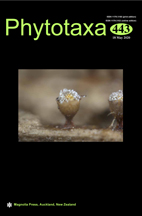Abstract
In North Vietnam, two baccate new species of Begonia in Begoniaceae are described, viz. Begonia pendens and Begonia satelloides. The first new species differs from B. hahiepiana principally in its cylindrical petioles, pistillate flowers with obovate outer petals and lanceolate inner petals, and trigonous-ellipsoid fruits with 2.9‒3.4 length- to width ratio. The second new species differs from B. balansana mainly in the abaxially pubescent leaf surface, cylindrical petioles, broadly ovate leaves, and the fruits with wings. The two new species usually grow under dense non-limestone forests of tropical lowlands and valleys, and face a higher risk of extinction from tropical agricultural practices compared to those neighboring species growing on limestone hills.

